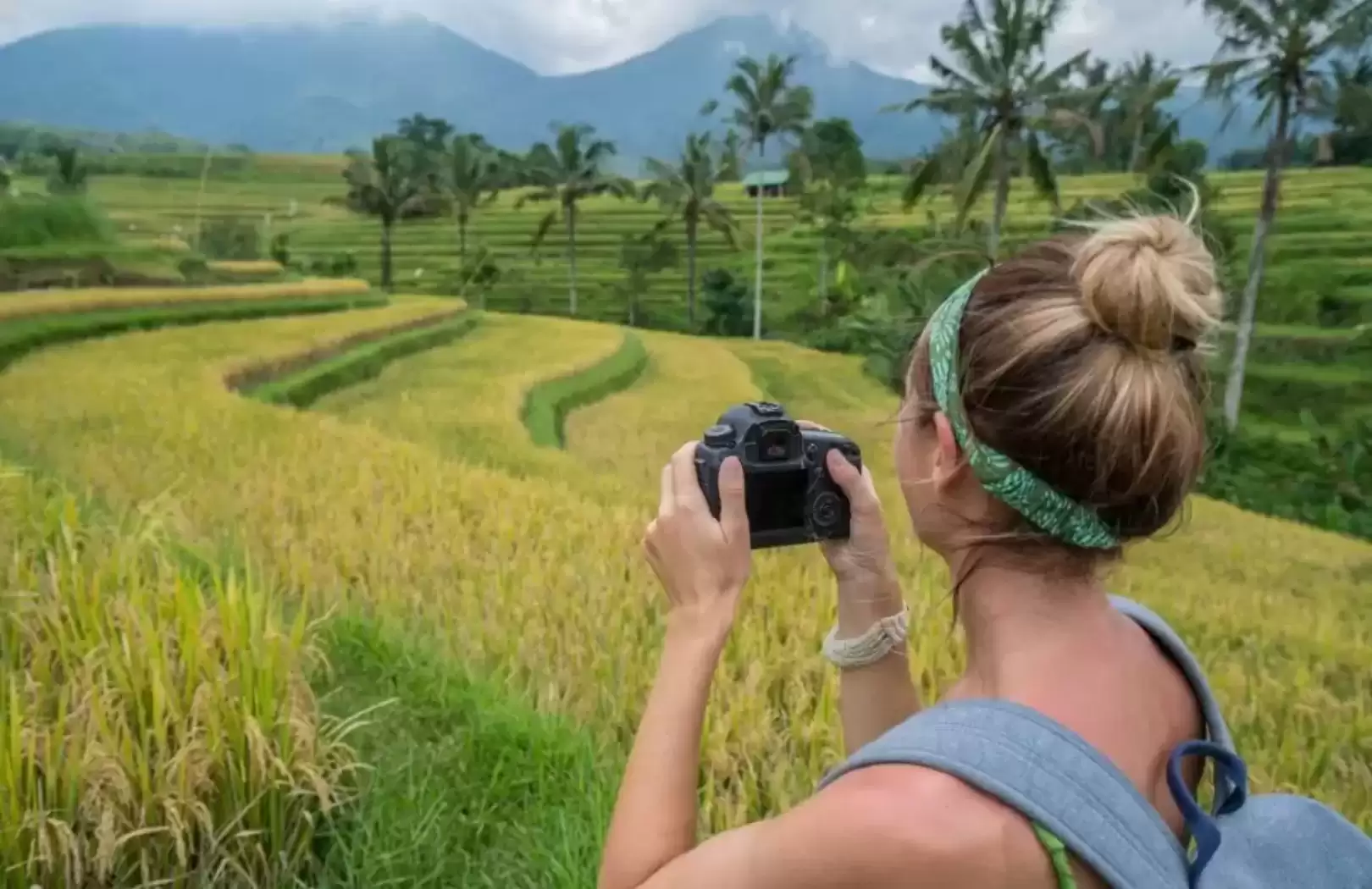Exploring Bali’s Hidden Gems - Top 5 Must-Visit Spots for Nature Lovers

Bali, often hailed as the "Island of the Gods," is renowned for its mesmerizing landscapes, vibrant culture, and spiritual heritage. While the island is famous for its bustling beaches, luxurious resorts, and popular temples, it also boasts an abundance of hidden gems that offer a peaceful escape into nature. For nature lovers seeking serenity and a deeper connection with Bali's stunning scenery, the island has much more to offer than meets the eye. In this guide, we will take you through the top five must-visit hidden spots in Bali, where lush jungles, cascading waterfalls, and tranquil landscapes await your exploration.
1. Sekumpul Waterfall: Bali's Hidden Waterfall Paradise
Located in the northern part of Bali, Sekumpul Waterfall is often considered one of the island’s most beautiful and untouched waterfalls. Tucked away in the village of Sekumpul, this stunning waterfall is not only a natural wonder but also a hidden treasure, often overlooked by many travelers. Sekumpul is a collection of seven waterfalls cascading from a lush, verdant jungle, creating a majestic and serene environment.
How to Get There:
To reach Sekumpul, you will need to embark on a scenic trek through rural villages and lush forests. The trek itself is an adventure, as you navigate through dense tropical jungle, cross rivers, and hike up and down trails. Though it requires some effort, the breathtaking views of the waterfalls make it well worth the journey.
What to Expect:
-
Incredible Views: Sekumpul is a multi-tiered waterfall, and its natural beauty is unmatched. The sheer power of the water and the surrounding verdant jungle provide a mesmerizing spectacle.
-
Peace and Serenity: Unlike other popular waterfalls in Bali, Sekumpul is relatively less crowded, allowing visitors to experience a tranquil escape.
-
Refreshing Dip: If you’re feeling adventurous, take a refreshing swim in the cool, clear waters beneath the waterfall, surrounded by the lush jungle.
Best Time to Visit: The best time to visit Sekumpul is during the dry season (April to October), when the trails are less slippery, and the waterfalls are at their most impressive.
2. Nusa Penida: The Island of Untouched Beauty
While Bali's main island is teeming with tourist attractions, the nearby island of Nusa Penida remains one of Bali’s best-kept secrets. Known for its rugged cliffs, crystal-clear waters, and dramatic landscapes, Nusa Penida offers some of the most spectacular nature spots in Bali. With its secluded beaches, hidden caves, and untouched beauty, it’s an ideal destination for nature lovers.
How to Get There:
To reach Nusa Penida, take a fast boat from Sanur Harbour, which will take approximately 45 minutes to an hour. Once on the island, you’ll need to explore the rugged terrain with a rented scooter or hire a local driver, as public transportation is limited.
Must-See Spots on Nusa Penida:
-
Kelingking Beach: One of the most photographed spots on Nusa Penida, Kelingking Beach is known for its T-Rex shaped cliff and stunning turquoise waters. The steep descent to the beach is not for the faint-hearted, but the views and the reward of the pristine beach are worth the effort.
-
Angel’s Billabong: A natural infinity pool with crystal-clear waters, Angel’s Billabong is a magical place where visitors can swim in a lagoon framed by limestone cliffs.
-
Broken Beach: A dramatic coastal formation, Broken Beach is a collapsed sea cave, creating a picturesque archway that overlooks the ocean.
What to Expect:
-
Unspoiled Beaches: The beaches on Nusa Penida are perfect for nature lovers who seek solitude and an authentic Bali experience. The island's beaches are not as crowded as those on the mainland, giving visitors the chance to truly connect with nature.
-
Dramatic Landscapes: The rugged cliffs, crystal-clear waters, and rocky coastlines of Nusa Penida make it a paradise for photography and nature enthusiasts.
Best Time to Visit: The dry season (April to October) is the best time to visit Nusa Penida, as the seas are calmer and the weather is ideal for outdoor exploration.
3. Jatiluwih Rice Terraces: Bali’s UNESCO World Heritage Site
When it comes to Bali’s landscapes, few sights are as iconic and beautiful as the Jatiluwih Rice Terraces. These sprawling terraces, located in the central region of Bali, are a UNESCO World Heritage Site and a testament to the island’s agricultural prowess. The Jatiluwih Rice Terraces are part of Bali's traditional subak irrigation system, which has been practiced for centuries, and offer a rare glimpse into Bali’s rural life.
How to Get There:
The Jatiluwih Rice Terraces are about a 1.5-hour drive from Ubud. Visitors can easily hire a driver to reach the terraces, and there are several routes that offer beautiful scenic drives through the lush hills of Bali.
What to Expect:
-
Breathtaking Views: The Jatiluwih Rice Terraces are spread out over 600 hectares of rolling hills, providing panoramic views of the emerald green fields and the majestic Mount Batukaru in the distance.
-
Cultural Insight: The rice terraces offer more than just natural beauty—they are a living representation of Bali’s centuries-old agricultural traditions. Visitors can take a stroll along the terraced fields and learn about the unique subak irrigation system that sustains these fields.
-
Peaceful Atmosphere: Unlike the more crowded rice terraces near Ubud, Jatiluwih offers a quiet and peaceful atmosphere, making it a perfect spot for nature walks and reflection.
Best Time to Visit: The best time to visit is during the dry season, but the rice terraces are beautiful year-round, especially during the planting and harvest seasons.
4. Bali Barat National Park: A Hidden Sanctuary for Wildlife
Located on the western tip of Bali, Bali Barat National Park is a hidden gem for nature lovers and wildlife enthusiasts. Covering 190 square kilometers, the park is home to a wide range of ecosystems, from mangrove forests and coastal wetlands to savannahs and rainforests. It is a sanctuary for Bali’s wildlife, including the endangered Bali Starling, a bird species native to the island.
How to Get There:
Bali Barat National Park is located in the Jembrana Regency, about a 3-hour drive from Denpasar. The park can be reached by car, and it’s best to hire a guide for a more immersive experience.
What to Expect:
-
Wildlife Watching: Bali Barat is a haven for birdwatchers and wildlife enthusiasts. Besides the Bali Starling, the park is home to monkeys, deer, wild boars, and a variety of bird species.
-
Diverse Landscapes: The park’s landscapes are incredibly diverse, with lush forests, dry savannahs, and coastal wetlands. Explore the various ecosystems by foot, on horseback, or by boat.
-
Snorkeling and Diving: The waters off the coast of Bali Barat are home to vibrant coral reefs and marine life, making it a great destination for snorkeling and diving.
Best Time to Visit: The dry season (April to October) is the best time to visit Bali Barat National Park for wildlife viewing and outdoor activities.
5. Munduk Waterfalls: A Hidden Gem in North Bali
Munduk, located in the northern part of Bali, is a charming village that offers some of the island’s most serene natural landscapes. Known for its cool climate, lush forests, and cascading waterfalls, Munduk is the perfect escape for nature lovers looking for tranquility away from the bustling crowds.
How to Get There:
Munduk is about a 2.5-hour drive from Denpasar and is easily accessible via the main road to Singaraja. Once you reach the village, you’ll need to embark on short treks to reach the waterfalls.
What to Expect:
-
Waterfall Adventures: Munduk is home to several beautiful waterfalls, including Munduk Waterfall, Melanting Waterfall, and Golden Valley Waterfall. These waterfalls are surrounded by lush tropical forests and offer peaceful settings for reflection and relaxation.
-
Trekking and Nature Walks: The village is an excellent destination for trekking, with several well-marked trails that lead to stunning viewpoints, coffee plantations, and waterfalls.
-
Cool, Refreshing Climate: The cool climate in Munduk provides a refreshing change from Bali's tropical heat, making it an ideal destination for outdoor exploration.
Best Time to Visit: Munduk is best visited during the dry season when the waterfalls are at their most impressive, and the weather is ideal for trekking and outdoor activities.
Conclusion
Bali is an island that offers much more than its famous beaches and cultural landmarks. For nature lovers seeking a deeper connection with the island’s beauty, these hidden gems are a perfect escape. From the cascading waterfalls of Sekumpul and Munduk to the tranquil beauty of Jatiluwih Rice Terraces and the wild landscapes of Bali Barat National Park, Bali’s nature reserves are waiting to be discovered. Whether you’re trekking through lush jungles, exploring hidden beaches, or watching wildlife in their natural habitats, Bali’s hidden gems offer unforgettable experiences for those who venture off the beaten path.
So, pack your bags, put on your walking shoes, and prepare to explore the island's pristine beauty—because Bali’s best-kept secrets are waiting for you.

